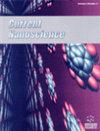The Pharmaceutical Role of Silver Nanoparticles in Treating Multidrug-Resistant Bacteria and Biofilms
IF 1.5
4区 材料科学
Q4 BIOTECHNOLOGY & APPLIED MICROBIOLOGY
引用次数: 0
Abstract
According to the WHO, antimicrobial resistance has recently become worrisome and constitutes an international public health crisis. The advent of multidrug-resistant bacteria has been implicated in the rise in morbidity and death caused by microbial diseases. However, the lack of new and effective antibiotics has been associated with the emergence of drug resistance. This has resulted in worldwide endeavors to advance innovative drugs with higher efficiency and more sophisticated drug delivery technologies. In addition, the utilization of nanoparticles as innovative biological substances is considered a worldwide issue of interest. Nanoparticles have the potential to become a vital and viable treatment alternative for treating drug-resistant illnesses. Nanoparticles contain metallic substances and their oxides, which have the highest possibility among all nanoparticles and have piqued the curiosity of numerous experts. Furthermore, using silver nanoparticles in photothermal treatment has attracted much interest. This review includes knowledge about the problems of drug resistance and the mechanism of action of silver nanoparticles. This review comprehensively assesses the current discoveries for using silver nanoparticles as antimicrobial medicines in infections caused by resistant microorganisms. Also being explored as nanomaterials that can react with light (photothermal treatment) to destroy bacteria and promote improved medication administration and release. Furthermore, it focuses on the synergy between nanoparticles with antimicrobial action and other nanoparticles, microbial adaptation mechanisms to nanoparticles, and existing obstacles and future possibilities that were thoroughly examined.银纳米粒子在治疗多药耐药细菌和生物膜中的药物作用
据世界卫生组织称,抗菌素耐药性最近变得令人担忧,并构成了一场国际公共卫生危机。耐多药细菌的出现与微生物疾病引起的发病率和死亡率上升有关。然而,缺乏新的和有效的抗生素与耐药性的出现有关。这导致全球努力推进具有更高效率和更复杂的给药技术的创新药物。此外,纳米粒子作为创新生物物质的利用被认为是一个世界性的问题。纳米粒子有可能成为治疗耐药疾病的重要和可行的治疗选择。纳米粒子含有金属物质及其氧化物,在所有纳米粒子中可能性最高,引起了众多专家的好奇。此外,纳米银在光热处理中的应用也引起了人们的广泛关注。本文综述了纳米银的耐药问题和作用机制。这篇综述全面评估了目前在耐药微生物引起的感染中使用纳米银作为抗菌药物的发现。此外,纳米材料还可以和光反应(光热处理),以消灭细菌,促进改善药物管理和释放。此外,它还着重于具有抗菌作用的纳米颗粒与其他纳米颗粒之间的协同作用,微生物对纳米颗粒的适应机制,以及现有的障碍和未来的可能性。
本文章由计算机程序翻译,如有差异,请以英文原文为准。
求助全文
约1分钟内获得全文
求助全文
来源期刊

Current Nanoscience
工程技术-材料科学:综合
CiteScore
3.50
自引率
6.70%
发文量
83
审稿时长
4.4 months
期刊介绍:
Current Nanoscience publishes (a) Authoritative/Mini Reviews, and (b) Original Research and Highlights written by experts covering the most recent advances in nanoscience and nanotechnology. All aspects of the field are represented including nano-structures, nano-bubbles, nano-droplets and nanofluids. Applications of nanoscience in physics, material science, chemistry, synthesis, environmental science, electronics, biomedical nanotechnology, biomedical engineering, biotechnology, medicine and pharmaceuticals are also covered. The journal is essential to all researches involved in nanoscience and its applied and fundamental areas of science, chemistry, physics, material science, engineering and medicine.
Current Nanoscience also welcomes submissions on the following topics of Nanoscience and Nanotechnology:
Nanoelectronics and photonics
Advanced Nanomaterials
Nanofabrication and measurement
Nanobiotechnology and nanomedicine
Nanotechnology for energy
Sensors and actuator
Computational nanoscience and technology.
 求助内容:
求助内容: 应助结果提醒方式:
应助结果提醒方式:


